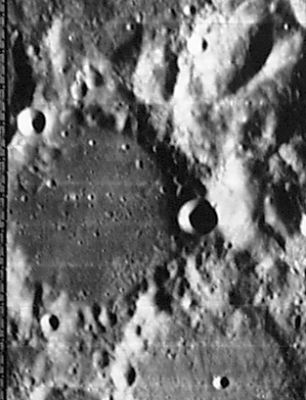La Caille
Contents
[hide]La Caille
(current IAU name; original IAU name: Lacaille)
| Lat: 23.8°S, Long: 1.1°E, Diam: 67 km, Depth: 2.76 km, Rükl: 55 |
Images
LPOD Photo Gallery Lunar Orbiter Images Apollo Images
- Although not mentioned in the LPI's search list for La Caille-related Apollo photographs, it (La Caille) WAS captured on several of Apollo 16's orbital frames! La Caille is noticeable in A16's Fairchild-mapping/metric magazines REV 26 and REV 48 (oblique south-looking photographs), such as frame AS16-M-0711, in which La Caille's location is very near the central part of the curved horizon.
- Research: Danny Caes.
Maps
(LAC zone 95B4) LAC map Geologic map
Description
Description: Elger
(IAU Directions) LACAILLE.--An oblong enclosure situated on the N. side of Blanchinus, and apparently about 30 miles in greatest diameter. The border is to a great extent linear and continuous on the N., but elsewhere abounds in depressions. Two large inosculating ring-plains are associated with the N.W. wall.
Description: Wikipedia
Additional Information
Depth data from Kurt Fisher database
- Viscardy, 1985: 2.76 km
- Cherrington, 1969: 2.77 km
The rim of La Caille is part of the Lunar X (which is a well-known telescopic clair-obscur phenomenon for observers of the First Quarter Moon).
Nomenclature
- Named for Nicolas Louis de Lacaille (March 15, 1713 – March 21, 1762) was a French astronomer. He is noted for his catalogue of nearly 10,000 southern stars, including 42 nebulous objects. This catalogue, called Coelum Australe Stelliferum, was published posthumously in 1763. It introduced 14 new constellations which have since become standard. He also calculated a table of eclipses for 1800 years. Lalande said of him that, during a comparatively short life, he had made more observations and calculations than all the astronomers of his time put together.
- This feature was catalog entry 3533 in the original IAU nomenclature of Blagg and Müller, where it is spelled Lacaille. The name is attributed to Schröter.
- The IAU changed the spelling to La Caille in 1961.
LPOD Articles
Bibliography
